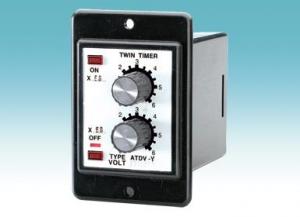1500v Solar Inverter
1500v Solar Inverter Related Searches
Best Inverter Solar Panel Solar Panel On Roof Rack Inverter To Solar Panel Ratio Solar Panel Decking Lights Solar Panel Inverter Box 1000 Watt Solar Panel Inverter 12 Volt Solar Panel Inverter Plastic Solar Lanterns Buy Solar Panel Inverter Solar Panel Inverter CostHot Searches
Type Of Inverter For Solar Types Of Inverter For Solar Used Solar Inverter For Sale Inverter Size For Solar System Solar Edge Inverter For Sale 5kw Solar Inverter For Sale Solar Inverter For Sale Solar Inverter For Battery Solar Inverter For Split Ac Solar Inverter For Laptop Solar Inverter For Fridge Solar With Inverter Price Solar Inverter With 2 Battery Solar Inverter Price In China Best Solar Inverter In China Solar Inverter Price In Dubai Solar Inverter Price In Uae Solar Inverter Price In Kenya Solar Inverter Price In Kerala Solar Hot Water Collectors For Sale1500v Solar Inverter Supplier & Manufacturer from China
Okorder.com is a professional 1500v Solar Inverter supplier & manufacturer, offers integrated one-stop services including real-time quoting and online cargo tracking. We are funded by CNBM Group, a Fortune 500 enterprise and the largest 1500v Solar Inverter firm in China.Hot Products
FAQ
- The role of a solar inverter in a grid-independent system is to convert the direct current (DC) generated by solar panels into alternating current (AC) that can be used to power electrical appliances in a home or building. It also manages the flow of electricity between the solar panels, battery storage (if present), and the electrical grid, ensuring efficient utilization of solar energy and enabling the system to operate independently from the grid.
- The role of a solar inverter in a grid-tied system is to convert the direct current (DC) electricity generated by the solar panels into alternating current (AC) electricity that can be used to power electrical appliances and be fed back into the utility grid. It also ensures the synchronization of the solar system with the grid and regulates the voltage and frequency of the electricity being produced.
- Yes, a solar inverter can be used with other renewable energy sources like wind or hydro power. Inverters are designed to convert the direct current (DC) produced by renewable energy sources into alternating current (AC) that can be used to power homes and businesses. So, by connecting wind turbines or hydroelectric generators to a solar inverter, the generated DC power can be efficiently converted and integrated into the electrical grid or used for various applications.
- The maximum short-circuit current that a solar inverter can handle depends on its design and specifications. However, in general, a solar inverter is designed to handle short-circuit currents ranging from 1.5 to 2 times the rated maximum output current of the inverter.
- The role of MPPT (Maximum Power Point Tracking) in a solar inverter is to optimize the power output from a solar panel by continuously tracking and adjusting the operating point to ensure it operates at the maximum power point. This is crucial because the power output of a solar panel is affected by various factors such as temperature and shading, and without MPPT, the inverter would not be able to extract the maximum power from the panel, leading to reduced efficiency and output. MPPT algorithms monitor the voltage and current of the solar panel and adjust the load to match the optimal operating voltage, maximizing the power output and overall system performance.
- The role of a solar inverter in a community solar project is to convert the direct current (DC) electricity generated by the solar panels into alternating current (AC) electricity that can be used to power homes and businesses. It also ensures that the electricity is synchronized with the utility grid and optimizes the efficiency of the solar power system.
- The typical installation process for a solar inverter involves several steps. First, a suitable location for the inverter is identified, usually near the solar panels. The inverter is then mounted securely on a wall or other structure. Next, the DC wiring from the solar panels is connected to the input terminals of the inverter, ensuring proper polarity. The AC output terminals of the inverter are then connected to the electrical panel of the building, often through a dedicated circuit breaker. Finally, the inverter is connected to the monitoring system to track its performance and ensure optimal energy production. It is important to follow the manufacturer's instructions and consult a professional electrician to ensure a safe and efficient installation.
- The role of capacitors in a solar inverter is to store and release electrical energy, helping to stabilize the voltage and provide smooth and continuous power output. Capacitors in a solar inverter also assist in filtering out any unwanted electrical noise or interference, ensuring the efficient and reliable operation of the inverter.














































